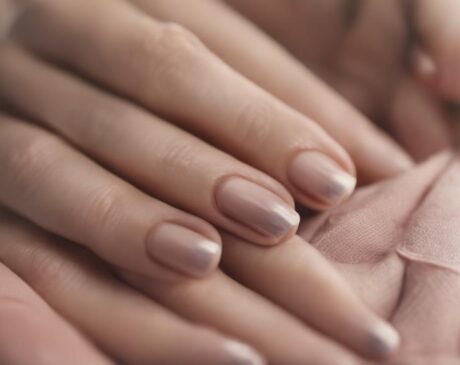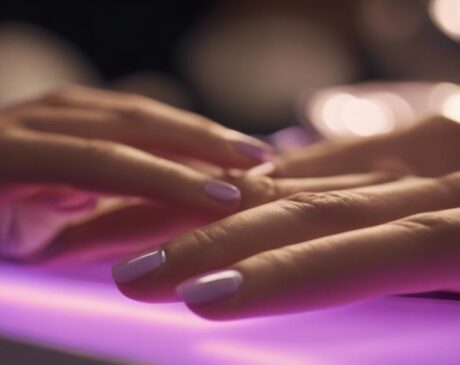Is There Artificial UV Light?
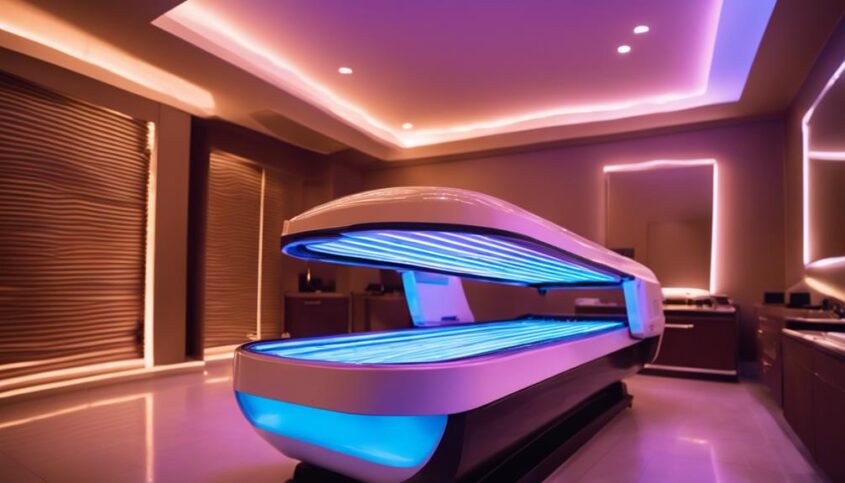
Artificial UV light is a type of ultraviolet radiation produced artificially, crucial for diverse uses in medical, industrial, and scientific sectors. There are various sources, including UV lamp varieties and LED UV lights, each offering unique benefits. UV light is efficient for disinfection, sterilization, and curing processes, while also posing risks like skin damage and weakened immune systems. Safety measures such as UV-blocking gear and proper equipment maintenance are essential for protection. Applications range from water purification to air disinfection. Understanding artificial UV light's importance and effects is key for optimal utilization in different fields.
Key Takeaways
- Artificial UV light is produced through artificial means for various applications.
- Common sources include UV lamps and LED UV lights.
- UV lamps include Low, Medium, High-Pressure Mercury, Excimer, and Metal Halide Lamps.
- LED UV lights offer energy-efficient and customizable alternatives.
- Ongoing advancements in UV technology enhance efficiency and environmental friendliness.
Understanding Artificial UV Light
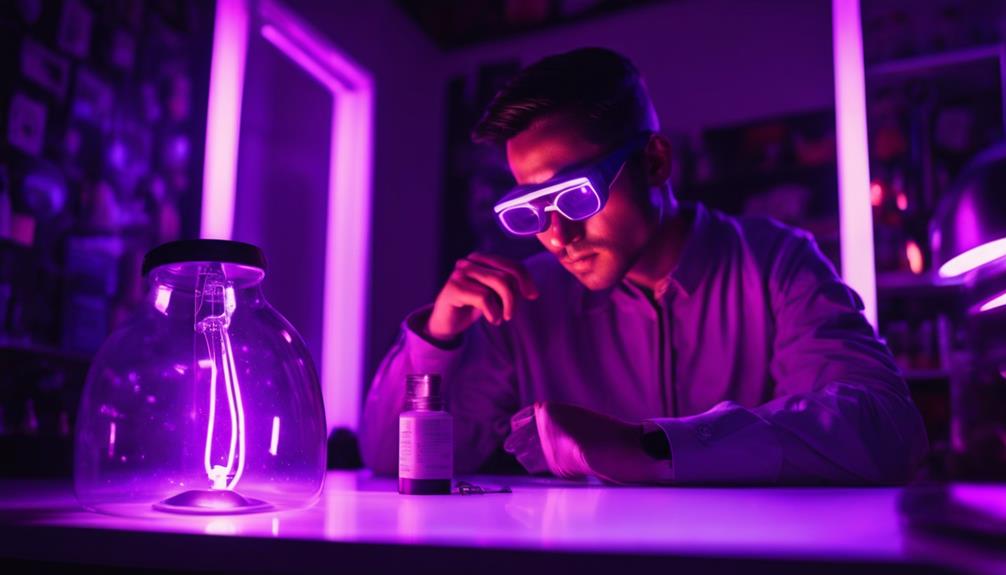
Artificial UV light, commonly used in various industries and applications, is a type of ultraviolet radiation produced through artificial means. This form of UV light plays a crucial role in numerous innovative processes across different sectors, including medical, industrial, and scientific fields. By harnessing artificial UV light, researchers and professionals have been able to develop cutting-edge technologies for disinfection, polymer curing, water purification, and more.
One of the key advantages of artificial UV light lies in its versatility and controllability. Unlike natural sources of UV light, such as the sun, artificial UV sources can be tailored to meet specific requirements in terms of intensity, wavelength, and duration. This level of precision enables businesses and organizations to optimize their processes, improve efficiency, and achieve consistent results.
Moreover, the use of artificial UV light continues to expand as new advancements are made in UV technology. With ongoing research and development, artificial UV sources are becoming increasingly efficient, cost-effective, and environmentally friendly, paving the way for further innovations in a wide range of applications.
Types of Artificial UV Sources
When it comes to artificial UV sources, there are various types available in the market, including UV lamp varieties and LED UV lights. Understanding the differences between these two common types of artificial UV sources is crucial for determining the most suitable option for specific applications. UV lamp varieties are traditional sources, while LED UV lights offer energy-efficient and customizable alternatives.
UV Lamp Varieties
Various types of ultraviolet lamps are utilized as artificial sources of UV light in different applications. One common type is the Low-Pressure Mercury Lamp, which emits UV light at a wavelength of 254nm, suitable for germicidal applications. Medium-Pressure Mercury Lamps produce a broader spectrum of UV light, making them ideal for curing applications in printing and coating industries. Another type is the High-Pressure Mercury Lamp, which emits UV light at different wavelengths, catering to industrial processes like UV curing and fluorescent microscopy. Excimer Lamps are used in scientific research, semiconductor manufacturing, and water purification due to their precise UV wavelengths. Additionally, Metal Halide Lamps offer high-intensity UV light for various industrial and scientific purposes, including photolithography and medical treatments.
LED UV Lights
LED UV lights are increasingly being recognized as efficient and versatile sources of ultraviolet radiation in various applications. These lights utilize Light Emitting Diodes (LEDs) to emit UV light, offering benefits such as energy efficiency, long lifespan, and compact size. Below is a table showcasing the different types of LED UV lights commonly used:
| Type | Wavelength Range | Applications |
|---|---|---|
| UV-A LED | 315-400 nm | Curing, counterfeit detection |
| UV-B LED | 280-315 nm | Medical phototherapy, sensors |
| UV-C LED | 100-280 nm | Disinfection, water purification |
| Far UV-C LED | 200-230 nm | Air purification, surface sterilization |
These LED UV lights are revolutionizing industries by providing a more efficient and targeted approach to utilizing ultraviolet light.
Benefits of Using UV Light

Have you ever considered the numerous benefits that come with utilizing UV light technology in various industries and applications? UV light, particularly in the form of LED UV lights, offers a wide range of advantages. One significant benefit is its efficiency in disinfection and sterilization processes. UV light can effectively kill bacteria, viruses, and other pathogens, making it invaluable in healthcare settings, food processing, water treatment, and air purification systems. Furthermore, UV light is eco-friendly as it does not involve the use of harsh chemicals, reducing environmental impact.
In addition to its disinfection properties, UV light is also utilized in various industrial processes such as curing adhesives, inks, and coatings. The fast curing times and energy efficiency of UV light make it a cost-effective solution for manufacturers. Moreover, UV light technology enables precise control over the curing process, resulting in higher quality end products. Overall, the benefits of using UV light are vast, ranging from improved productivity and cost savings to enhanced safety and environmental sustainability.
Risks Associated With UV Exposure
Given the widespread utilization of UV light technology in diverse industries for its numerous benefits, it is imperative to consider the potential risks associated with UV exposure. While UV light has proven effective in various applications such as sterilization, water purification, and medical treatments, overexposure to UV radiation can pose significant health risks.
One of the primary concerns related to UV exposure is skin damage. Prolonged exposure to UV rays, whether from the sun or artificial sources, can lead to sunburn, premature skin aging, and an increased risk of skin cancer. Additionally, UV radiation can cause eye damage, including cataracts and other vision problems.
Furthermore, repeated exposure to UV light without adequate protection can weaken the immune system and suppress the body's ability to fight off infections. It is crucial for individuals working with or exposed to UV light to take necessary precautions to minimize these risks and ensure their safety and well-being. Understanding the potential dangers of UV exposure is essential for promoting a safe and healthy environment in which UV technology can continue to thrive.
Safety Measures for UV Light
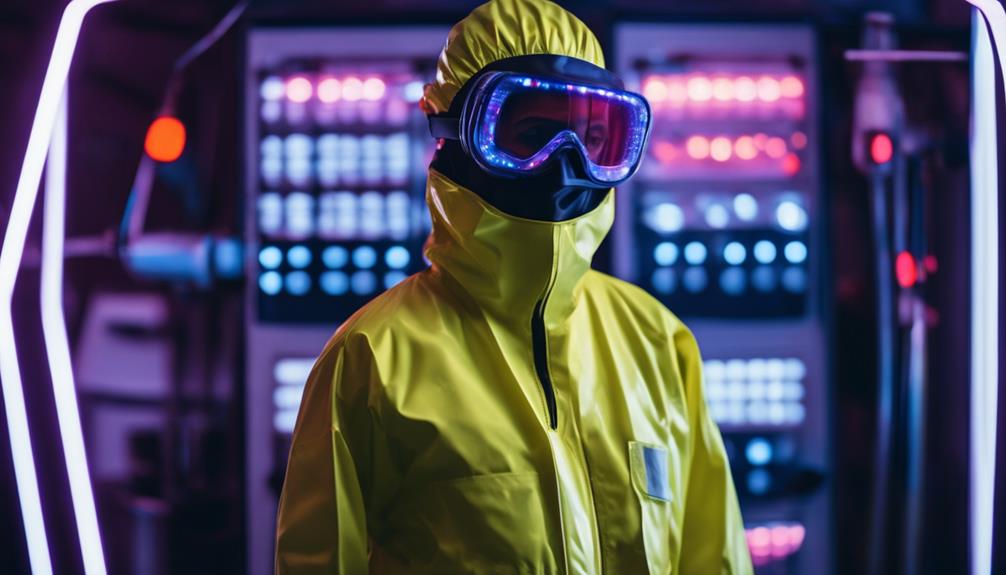
When working with UV light technology, it is essential to implement rigorous safety measures to protect individuals from potential health risks. Exposure to UV light can cause skin damage, eye irritation, and in severe cases, skin cancer. To ensure safety, individuals working with UV light sources must wear appropriate personal protective equipment (PPE) such as UV-blocking goggles, gloves, and lab coats. Additionally, limiting exposure time and maintaining a safe distance from UV light sources are crucial safety practices.
Regular calibration and maintenance of UV light equipment are necessary to ensure proper functioning and minimize potential risks. Adequate ventilation in work areas can help disperse any ozone produced by UV light sources, reducing respiratory risks. Training employees on the safe handling of UV light technology and emergency procedures in case of accidental exposure is paramount.
Applications of Artificial UV Light
Artificial UV light finds extensive applications due to its germicidal properties, which are utilized for disinfection purposes in various industries. However, it is crucial to be mindful of the associated skin cancer risk when using artificial UV light for prolonged periods. Understanding the disinfection applications and potential health risks of artificial UV light is essential for safe and effective utilization in diverse settings.
Germicidal Properties of UV
The germicidal properties of ultraviolet (UV) light have been widely recognized for their effectiveness in eliminating various pathogens and microorganisms. UV light in the germicidal range (specifically UVC light with wavelengths between 200-280 nm) is capable of disrupting the DNA and RNA of bacteria, viruses, and other microorganisms, rendering them unable to replicate and causing their destruction. This makes UV light a powerful tool in various applications such as water purification, air disinfection, and surface sterilization. Below is a table highlighting some key applications of UV germicidal light:
| Application | Description | Benefits |
|---|---|---|
| Water Purification | UV light used to kill bacteria in water | Chemical-free process |
| Air Disinfection | UV light used to sterilize air in HVAC systems | Reduces airborne pathogens |
| Surface Sterilization | UV light used to disinfect surfaces | Non-toxic and eco-friendly |
Skin Cancer Risk
Exposure to artificial UV light presents a significant risk factor for the development of skin cancer. While natural sunlight contains UV radiation, artificial UV sources like tanning beds and certain industrial processes can emit higher levels of UV radiation, increasing the risk of skin damage and cancer. The World Health Organization classifies artificial UV radiation as a Group 1 carcinogen, highlighting its potential harm. Innovations in UV technology aim to minimize these risks by developing safer UV light sources, such as UV LEDs with controlled wavelengths that reduce skin-damaging effects. Continued research into the effects of artificial UV light on skin health is crucial for developing advanced protection measures and promoting safer practices in industries where UV exposure is unavoidable.
Disinfection Applications
Harnessing the power of ultraviolet light for disinfection purposes is a rapidly growing field in various industries. UV light is used to kill bacteria, viruses, and other microorganisms, providing a chemical-free and effective method of sterilization. Below is a table showcasing some common applications of artificial UV light in disinfection:
| Industry | Application |
|---|---|
| Healthcare | Disinfecting medical equipment and hospital rooms |
| Food Processing | Sterilizing food surfaces and packaging |
| Water Treatment | Purifying drinking water and wastewater treatment |
| HVAC Systems | Improving indoor air quality |
| Laboratories | Sanitizing lab equipment and workspaces |
These applications demonstrate the versatility and effectiveness of artificial UV light in various sectors, paving the way for safer and cleaner environments.
Frequently Asked Questions
Can Artificial UV Light Be Used to Treat Skin Conditions or Diseases?
Artificial UV light can be utilized to effectively treat various skin conditions and diseases. Its targeted application can help alleviate symptoms of conditions such as psoriasis and eczema, offering patients a non-invasive therapeutic option with proven efficacy.
Are There Any Regulations or Guidelines in Place for the Use of Artificial UV Light in Various Industries?
Regulations and guidelines govern the use of artificial UV light across industries, ensuring safety and efficacy. From healthcare to manufacturing, compliance is crucial. Innovation drives enhancements in UV technology, pushing boundaries in diverse applications.
How Does Artificial UV Light Compare to Natural Sunlight in Terms of UV Exposure?
Artificial UV light, compared to natural sunlight, can vary in intensity and wavelength specificity, impacting UV exposure levels. Understanding these differences is crucial for industries utilizing UV light to ensure safety and efficacy in their applications.
Can Artificial UV Light Be Harmful to Plants or Animals in Indoor Settings?
Artificial UV light can be harmful to plants and animals in indoor settings if not regulated properly. Excessive exposure to UV light can lead to damage in plants and animals, disrupting their growth and health.
Are There Any Potential Long-Term Health Effects Associated With Regular Exposure to Artificial UV Light?
Regular exposure to artificial UV light may lead to potential long-term health effects such as skin damage, premature aging, and an increased risk of skin cancer. It is crucial to employ proper safety measures and regulate exposure levels.


